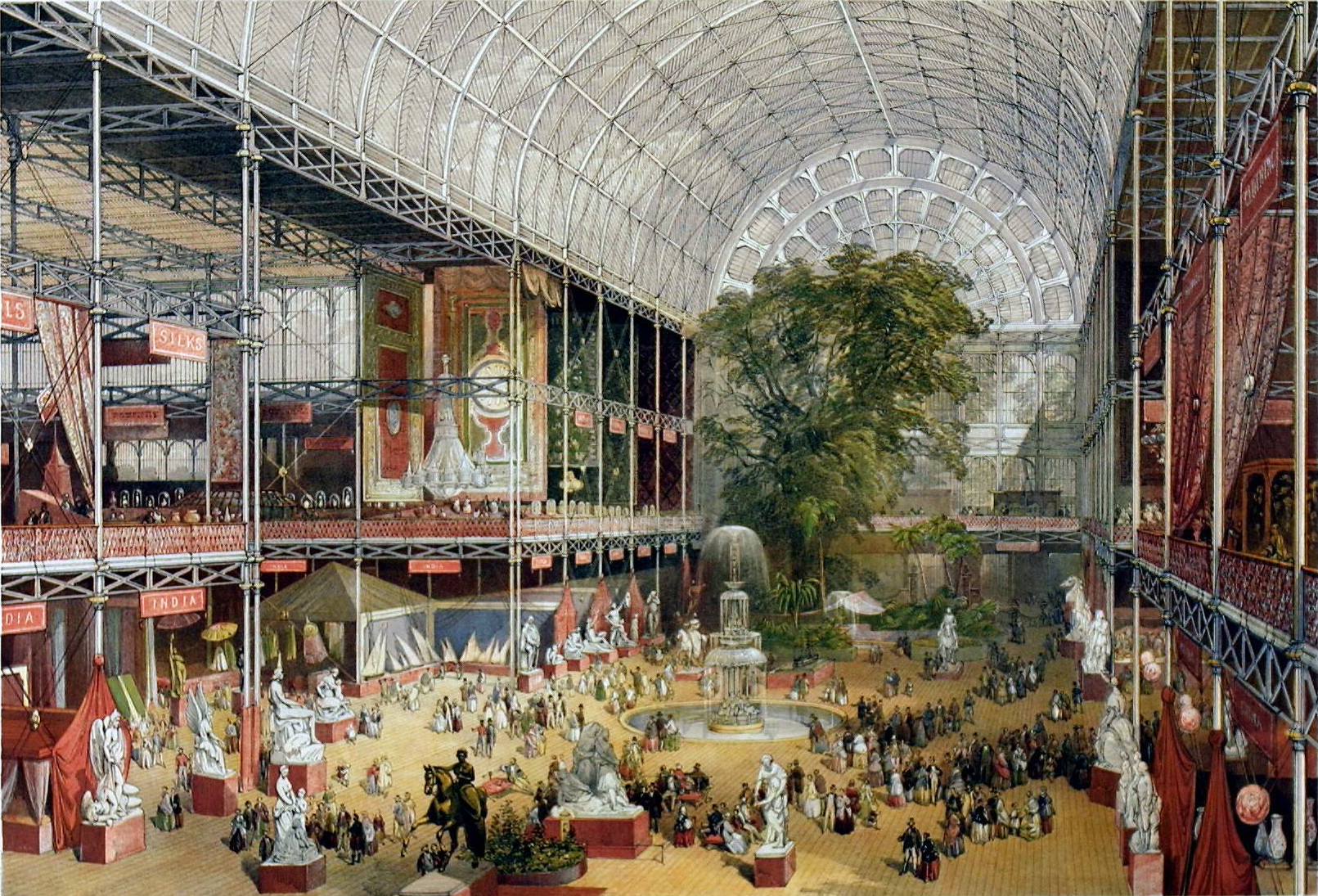As we read a variety of Victorian novels, poems, and nonfiction, consider what locations we travel to over the course of her oeuvre? Let's add them to this map to discern how some characters and authors rarely leave their homes while others see far-off parts of the world.
Victorian Literature and Culture, EN 352, Skidmore College Dashboard
Description
_-_Queen_Victoria_(1819-1901)_-_RCIN_401213_-_Royal_Collection.jpg)
_-_Queen_Victoria_(1819-1901)_-_RCIN_401213_-_Royal_Collection.jpg)
_-_Queen_Victoria_(1819-1901)_-_RCIN_401213_-_Royal_Collection.jpg)

https://en.wikipedia.org/wiki/Great_Exhibition#/media/File:Crystal_Palac...
“It was the best of times, it was the worst of times”—so writes Charles Dickens in A Tale of Two Cities (1859), succinctly capturing the dualities of the Victorian age (1837-1901). In this course, we will explore dualities and contradictions of the Victorian era through fiction, poetry, nonfiction, and the visual arts. We might think of the Victorians as sin-obsessed, dignified, proper, prudish, and tight-laced, but these same Victorians lived in an age of urban squalor, disease, rampant deprivations, prostitution, and child labor. This era of production and consumption witnessed rapid expansion of the British Empire; growth in literacy and industrialization; and the glory of the Great Exhibition of 1851, the first ever World’s Fair. Alongside these achievements came epidemics (typhoid took the life of Prince Albert in 1861); the Crimean War crisis and conflicts in India, Africa, China, and the West Indies; religious doubt; and the greed of imperialism, which underpins Charlotte Brontë’s Jane Eyre (1847). We will encounter the angel in the house and her fallen sister in Christina Rossetti’s Goblin Market (1862); Queen Victoria and Prince Albert alongside their poorest subjects in Henry Mayhew’s London Labour and the London Poor (1851); a clash between agrarian southern England and the industrial north in Elizabeth Gaskell’s North and South (1855); the divided human being in Robert Louis Stevenson’s Dr. Jekyll and Mr. Hyde (1886); and a scrooge transformed into a charitable man in Charles Dickens’s A Christmas Carol (1843). Course work includes 4 briefs, an exhibition on the Collaborative Organization for Virtual Education (COVE), and a final 8–10-page paper.
Galleries, Timelines, and Maps

By J. McNeven - collections.vam.ac.uk, Public Domain, https://commons.wikimedia.org/w/index.php?curid=665739
Our class gallery on COVE will focus on the Great Exhibition of 1851—Prince Albert’s brainchild and, to the Victorians, the greatest sight in the history of the world. The Great Exhibition, which ran from May 1 to October 15, 1851, celebrated the global prominence of British industry and the manifold achievements of the “civilized” world. Approximately 6 million people—a third of the British population of that time—visited the Crystal Palace, a cast-iron and glass building erected in Hyde Park to house the exhibitions on display. Over 40 times, Queen Victoria visited the... more
Individual Entries
Charlotte Brontë's novel Jane Eyre is reminiscent of the author’s own experiences. Many of the characters, locations, and events of the bildungsroman mirror Brontë’s life and the lives of her sisters. Protagonist Jane Eyre spends her early years attending the Lowood Institution, a charitable school dedicated to the religious and oppressive upbringing of young girls. This institution, though fictional, is based off of the Cowan Bridge School. The school was founded in Lancashire County in the 1820s, and four of the Brontë sisters attended Cowan Bridge until Maria and Elizabeth Brontë contracted tuberculosis. After their deaths, all Brontë children were removed from Cowan Bridge School. (MK)
